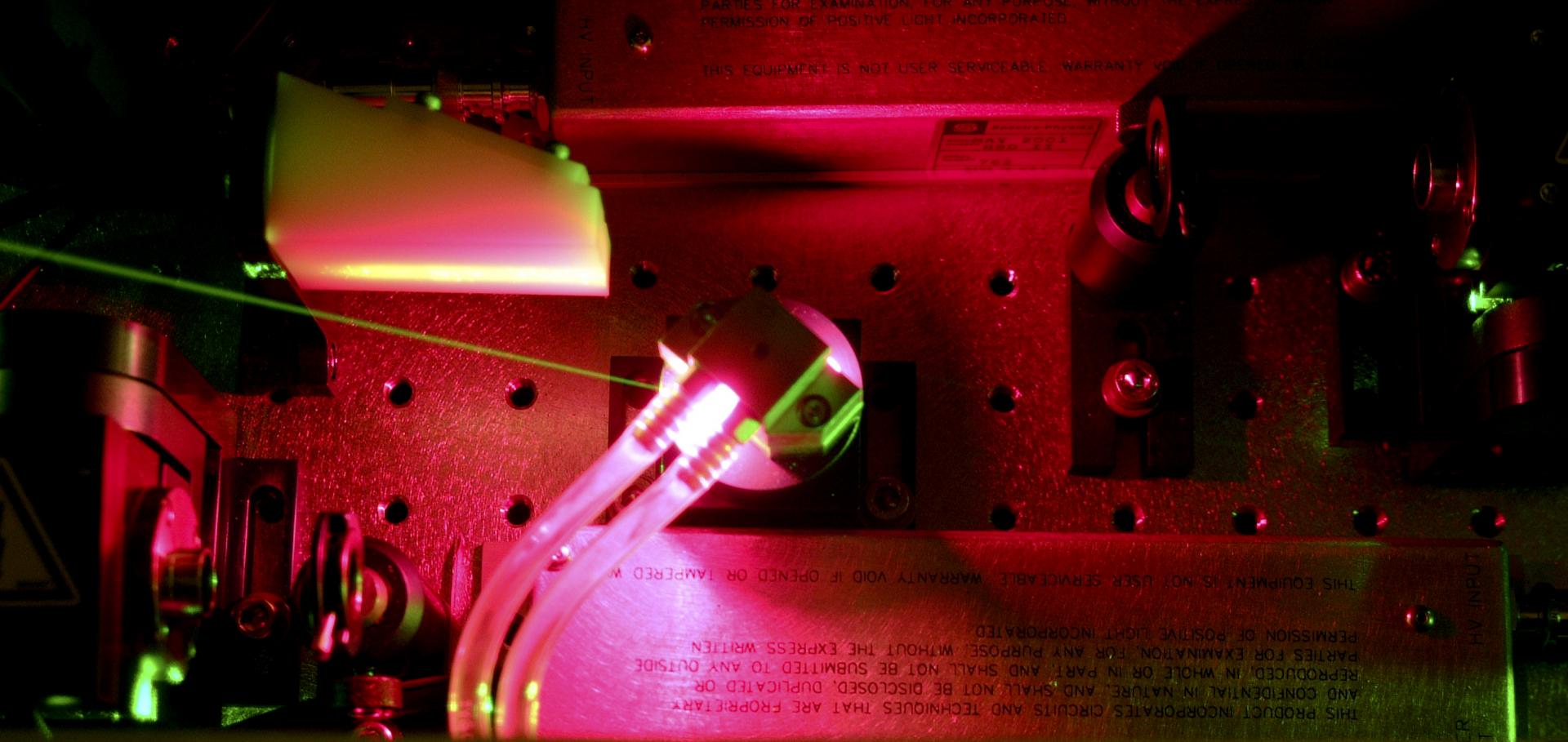41.8-nm Xe8+ laser driven in a plasma waveguide
Physical Review A Atomic Molecular and Optical Physics 70:2 (2004) 1-23821
Abstract:
The results of the first experimental demonstration of a short-wavelength laser driven within a gas-filled capillary-discharge waveguide were described. The xenon gas was mixed with the hydrogen and strong lasing on the 4d 95d-4d95p transition in Xe8+ at 41.8 nm was observed. Analysis shows that lasing was strongly correlated with good guiding of the pump pulse and numerical simulations indicate that gain is likely to have been achieved over a significant fraction of the 30 mm length of the capillary. The success of this proof-of-principle experiment suggests that this and other short-wavelength lasers could be driven within waveguides of this type, leading to increased energy output and reduced beam divergence.Progress on collisionally pumped optical-field-ionization soft X-ray lasers
IEEE Journal on Selected Topics in Quantum Electronics 10:6 (2004) 1351-1362
Abstract:
We present the status of optical field ionization soft X-ray lasers. The amplifying medium is generated by focusing a high-energy circularly polarized 30-fs 10-Hz Ti: sapphire laser system in a gaseous medium. Using xenon or krypton, strong laser emission at 41.8 and 32.8 nm, respectively, has been observed. After presenting the basis of the physics, we present recent characterization of the sources as well as dramatic improvement of their performances using the waveguiding technique.A review of laser guiding experiments
AIP CONF PROC 737 (2004) 125-136
Abstract:
In many cases the length over which particles can be accelerated in a laser-driven plasma accelerator is limited by refraction or diffraction of the driving laser pulse. In order to overcome this limitation the driving pulse must be guided or channeled through the plasma, In this paper we briefly review of the techniques used to guide laser pulses with peak intensities up to 10(19) W cm(-2), and describe recent experimental results.Application of the gas-filled capillary discharge waveguide to laser-plasma acceleration
AIP CONF PROC 737 (2004) 825-831
Abstract:
The application of the gas-filled capillary discharge waveguide to laser-plasma accelerators is reviewed. The results of experiments to guide high-intensity laser pulses in capillaries with circular or square cross-sections are described. The relation between capillary diameter, guided spot size, and plasma density are explored, and a possible new hybrid regime of guiding is identified.Molecular-dynamic calculation of the relaxation of the electron energy distribution function in a plasma
Physical Review E - Statistical, Nonlinear, and Soft Matter Physics 68:5 2 (2003) 564011-564018


